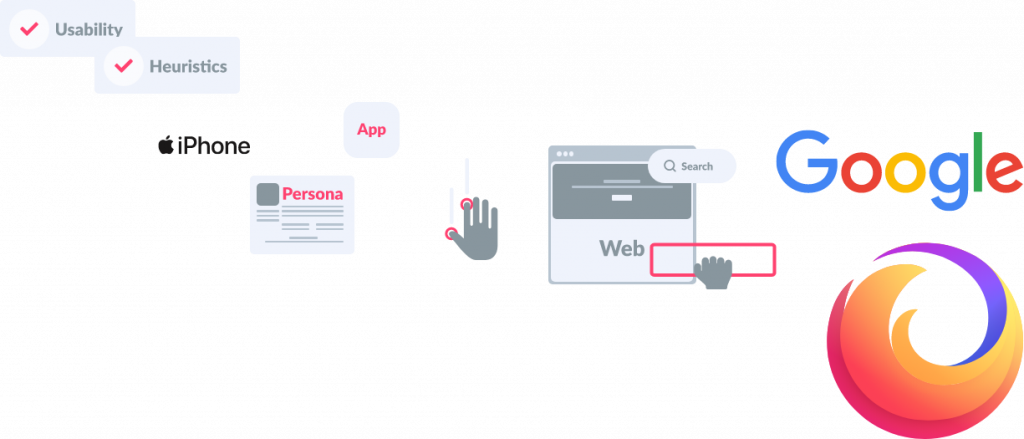Learn, Improve, Grow.
Get to know the
Design
Learn, Improve, Grow.
Boost your
Work
PROCESS

Design Process
A Design Process is made to solve a variety of problems. The experience I’ve gained has helped me use a variety of methods to make problem solving the main objective of my work.
From methodologies such as Design Thinking, Agile, Lean, & Design Sprint have sculptured my process taking the best of all of them and sometimes guiding the project under an specific methodology.
Research & Empathize
Understanding the user through analysis, information & data
In order to gain empathic understanding we need to observe and engage with people, understand their experiences, motivations and immerse in their physical environment.
Empathy is crucial to a human-centered design process. The more information is gathered during this stage the best possible understanding of the users, their needs, & the problem to be solved.
Define Priorities
Define objectives and issues to target, define priorities and business goals
All the information gathered and created will be analyzed and synthesized to define core problems, identify issues so we can establish what we call a “problem statement” in a human-centered manner.
This stage will help establish features, functions, and any other elements we may use to solve problems as fuel to start the third stage by asking “How might we?…”
Ideate & Create
Identifying new solutions and finding alt ways to view and solve the problem
We’ve grown to understand your users and their needs, we have analyzed and synthesized our observations and we have a human centered problem statement.
With this solid background we can start identifying new solutions & look for alternative ways to view the problem, using various techniques, such as brainstorm, brain write, worst possible idea, SCAMPER, etc.
Design & Prototype
Create Lo-Fi to Hi-Fi wireframes, define styles, & build interactive prototypes
Time to design.
Ideas would start as Low Fidelity Ptototypes, these are cost effective both time and design effort and will rereveal to us issues to solve, to then become High Fidelity Prototypes, with styles and personality.
The solutions and ideas will be implemented within the prototypes and, one by one, will be investigated, accepted, improved and re-examined, or rejected on the basis of the users’ experiences.
Test & Validate
Test the completed product, this will validate the solutions found previously
As the product gets. to completion testing and validation are elemental for the final stage, the results however are often used to redefine one or more problems.
During this phase, alterations and refinements are commonly made, this is in order to find better problem solutions and the best understanding of the product, service, experience and of course its users
Non-Linear Process
Although the description of the stages for the design process may have been outlined as direct and linear, it is actually in practice more flexible and in a non-linear fashion, allowing us and giving us more material, perspectives and information to better understand users, bring new ideas, reveal insights and improve experiences all over your projects.
All stages are not always sequential, and they do not have to follow any specific order they even may occur in parallel and be repeated iteratively.
As scary as it may sound to your business finances and/or your pockets and, even your teams, implementing this non-linear process into your daily planning and routines will grant you and your business tools and abilities to think, rethink and, iterate possible solutions to problems you may encounter later on.
